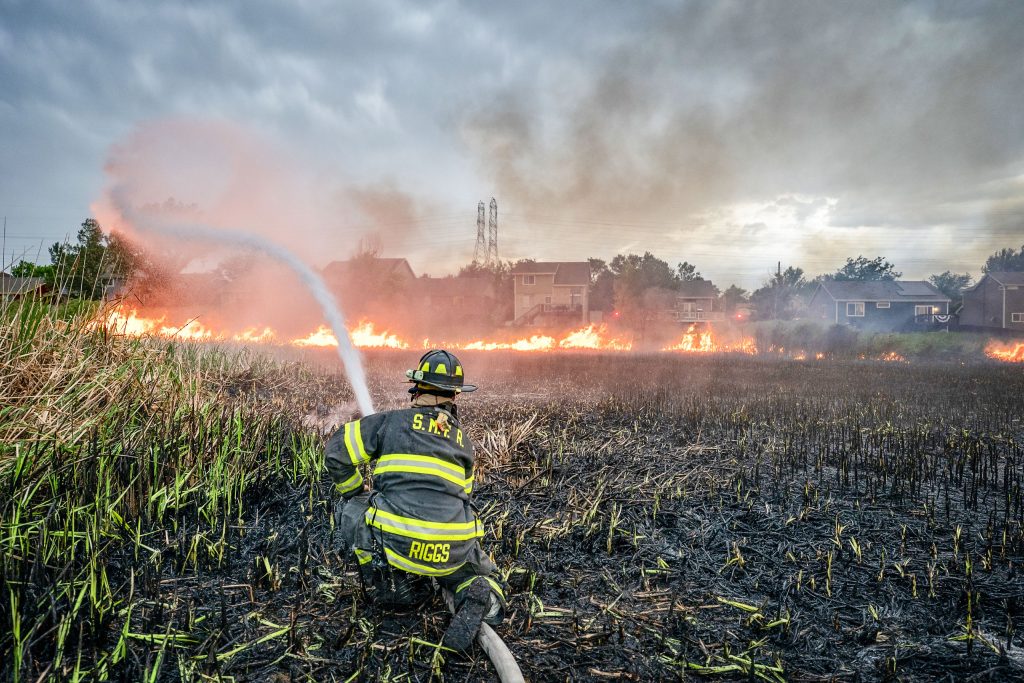Colorado living: Fire-adapt your home for wildfires

July 4, 2022, South Metro Fire Rescue joined the Aurora Fire Department and Arapahoe County Sheriff’s Office to battle a brush fire near homes on Himalaya Way in Aurora. Fortunately, no injuries or damages to homes were reported.
Much of Castle Pines lies within the wildland-urban interface (WUI), where human developments meet and intermingle with wildland vegetation. Wildfires are a naturally occurring peril in WUI communities.
While the City of Castle Pines is working on wildfire mitigation in city open spaces, homeowners can take steps to fire-adapt or harden their homes against wildfires. Governor Jared Polis recently signed into law HB24-1091, which empowers homeowners to use less-flammable materials and prevents HOAs from restricting the installation of fire-hardened building materials such as metal, certain types of stucco, and fiber cement siding.
Fire-adapting your home and adjacent areas, the “home ignition zone” (HIZ), means reducing ignition hazards, protecting against embers and guarding against flame exposure to create a defensible space around the home. Three zones make up the HIZ: zero to five feet from the home, including attached decks (Zone 1); five to 30 feet (Zone 2); and 30 to 100 feet (Zone 3). To fire-adapt, start with the home and work outward.
Zone 1 fire-adaptations help eliminate ember ignition and direct flame contact with the home. Some easier steps here include:
- Regularly removing dead vegetation and debris from within five feet of the house, and from the deck, roof and gutters
- Trimming branches away from the house
- Installing 1/8-inch metal mesh screens on vents, areas below decks and stilt foundations
- Removing stored items from under decks
- Removing flammable material below the home’s siding
Other more-involved steps include installing fire-resistant gutters and gutter covers, vents, roof shingles, and siding. Wood fencing can lead flames to the home so consider replacing it with materials that resist ignition, at least close to the home.
Zone 2 is designed to provide less fuel to an approaching fire, to help keep it from burning directly to the home. Some steps include mowing grass to four inches tall or shorter, removing low evergreen branches, replacing flammable mulches with less-flammable alternatives and replacing flammable plants with wildfire-resistant species (a guide to these is in link below).
Zone 3 is designed to help keep the fire on the ground. Some steps include removing low tree branches and increasing the spaces between potential surface fuels. If Zone 3 stretches beyond property lines, coordinate with neighbors on an appropriate defensible space.
These are just a few of the steps to take. Fire-adapting is not a one-time effort; it requires regular, ongoing maintenance to be effective. For more information, visit csfs.colostate.edu/live-wildfire-ready, www.castlepinesco.gov/wildfire-safety-and-risk-reduction, and lp.constantcontactpages.com/cu/4uJUvJh. For a list of wildfire resistant plants, visit www.castlepinesco.gov/wildfiremitigation and look under Resources.
By Susan Helton; photo courtesy of South Metro Fire Rescue